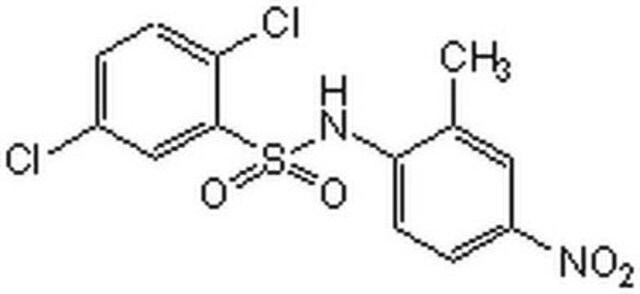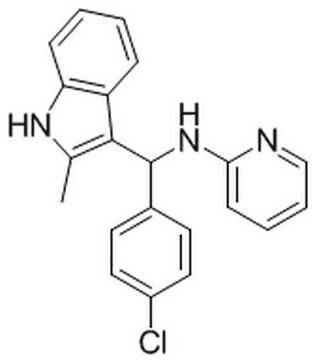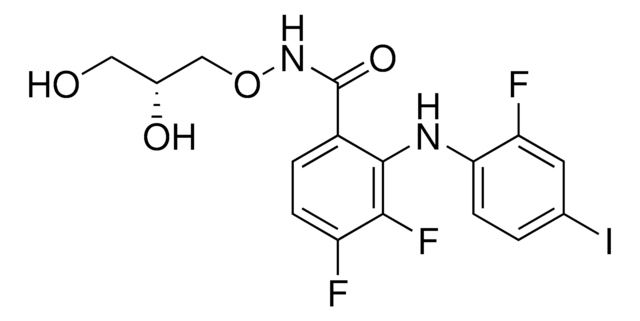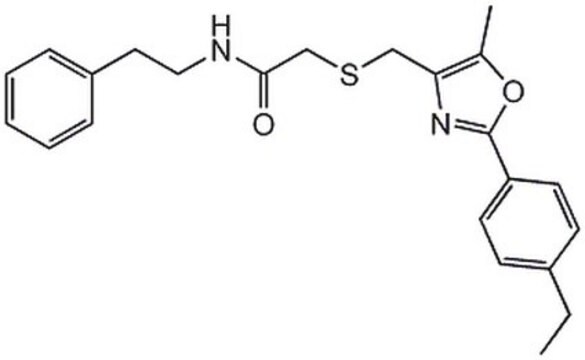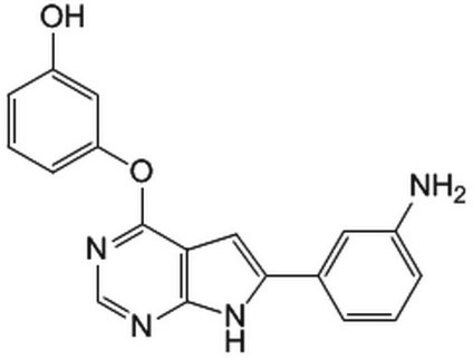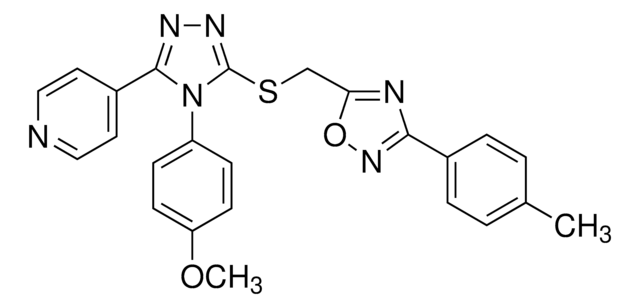219331
β-Catenin/Tcf Inhibitor II, PKF118-310
The β-Catenin/Tcf Inhibitor II, PKF118-310 controls the biological activity of β-Catenin/Tcf. This small molecule/inhibitor is primarily used for Cancer applications.
Synonim(y):
β-Catenin/Tcf Inhibitor II, PKF118-310, 1,6-Dimethylpyrimido[5,6-e][1,2,4]triazine-5,7-dione, Wnt Pathway Inhibitor X
About This Item
Polecane produkty
Poziom jakości
Próba
≥95% (HPLC)
Postać
solid
producent / nazwa handlowa
Calbiochem®
warunki przechowywania
OK to freeze
protect from light
kolor
dark yellow
rozpuszczalność
DMSO: 100 mg/mL
Warunki transportu
ambient
temp. przechowywania
2-8°C
Opis ogólny
Opakowanie
Ostrzeżenie
Rekonstytucja
Inne uwagi
Lepourcelet, M., et al. 2004. Cancer Cell5, 91.
Informacje prawne
Hasło ostrzegawcze
Danger
Zwroty wskazujące rodzaj zagrożenia
Zwroty wskazujące środki ostrożności
Klasyfikacja zagrożeń
Acute Tox. 2 Oral
Kod klasy składowania
6.1A - Combustible acute toxic Cat. 1 and 2 / very toxic hazardous materials
Klasa zagrożenia wodnego (WGK)
WGK 3
Temperatura zapłonu (°F)
Not applicable
Temperatura zapłonu (°C)
Not applicable
Certyfikaty analizy (CoA)
Poszukaj Certyfikaty analizy (CoA), wpisując numer partii/serii produktów. Numery serii i partii można znaleźć na etykiecie produktu po słowach „seria” lub „partia”.
Masz już ten produkt?
Dokumenty związane z niedawno zakupionymi produktami zostały zamieszczone w Bibliotece dokumentów.
Klienci oglądali również te produkty
Nasz zespół naukowców ma doświadczenie we wszystkich obszarach badań, w tym w naukach przyrodniczych, materiałoznawstwie, syntezie chemicznej, chromatografii, analityce i wielu innych dziedzinach.
Skontaktuj się z zespołem ds. pomocy technicznej
